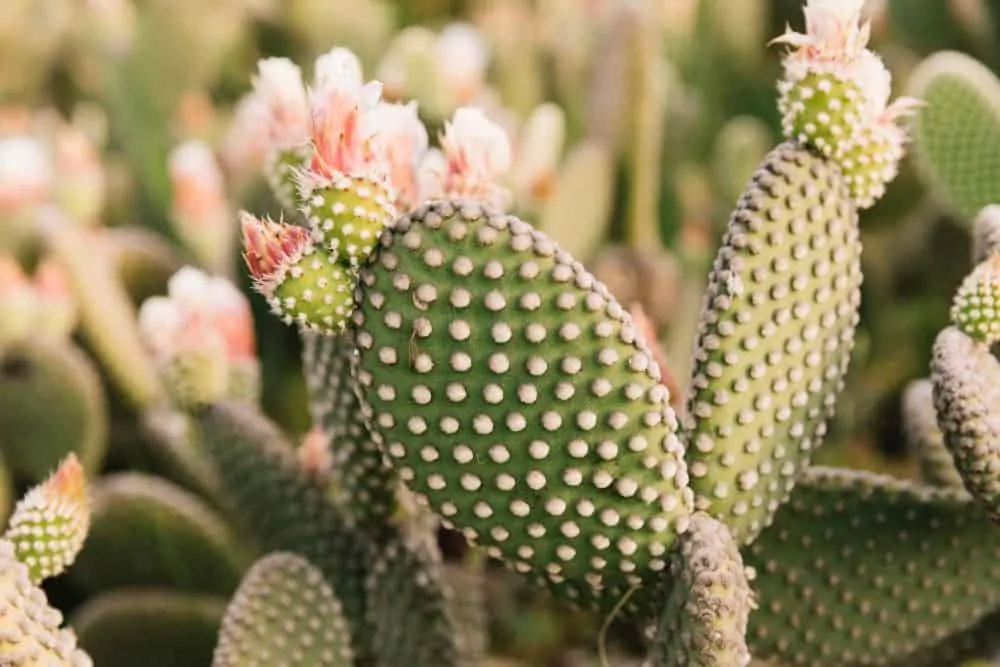

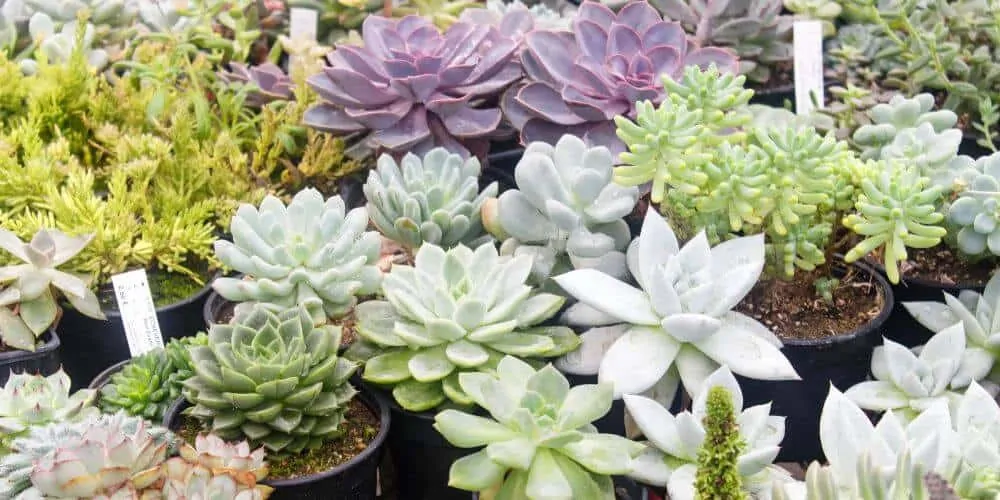
Succulents are a species of plants that contains water inside their leaves. Although most species and genera have large, meaty leaves, some have thicker leaves than others. Succulents prefer dry environments and don’t do well in high humidity levels.
Even just a quick peek in the succulent department of any plant store can be enough to leave a (beginning) houseplant lover’s head spinning. The sheer amount of types of succulents can be pretty overwhelming. So, how do you even start identifying them and figuring out which one is right for your home?!
Today, we have put together a list of the most awesome types of succulents with pictures to make things a little easier.
All these succulent varieties are ones you’ll find in your local garden center and might have in your collection, so happy identifying!
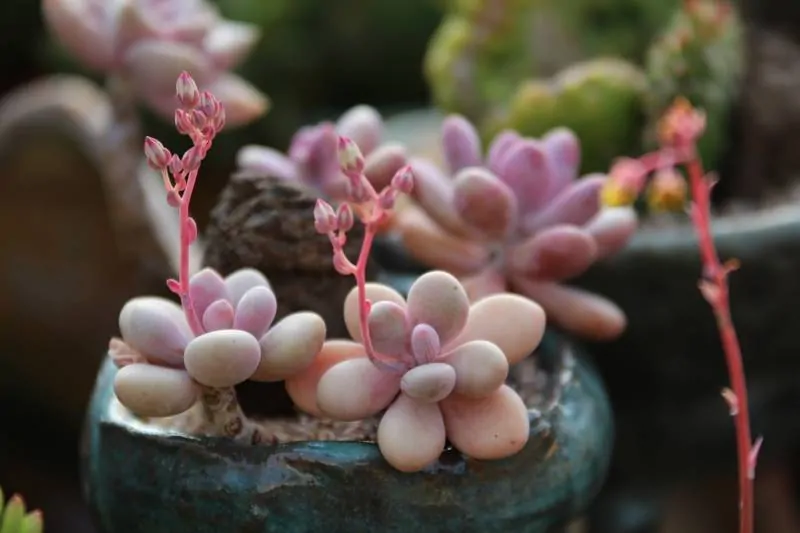
The lovely Pachyphytum is characterized by its typical pastel purple to grey or greenish leaves and rosette shape. It might also have farina on its leaves – a powdery protective substance that can easily be damaged by touching.
The most common members of the Pachyphytum genus are Pachyphytum compactum and Pachyphytum oviferum, the latter of which is also known as the ‘moonstone’ succulent and appreciated for its funky egg-like leaf shapes.
The genus originates from Mexico, which means it’ll appreciate lots of sunlight and doesn’t do well in low temperatures. Consider it for a drought-tolerant garden that does not need much maintenance.
Also, avoid overwatering and dense soil: a more poor and gritty mixture will work best. This species rots very easily, so be careful!
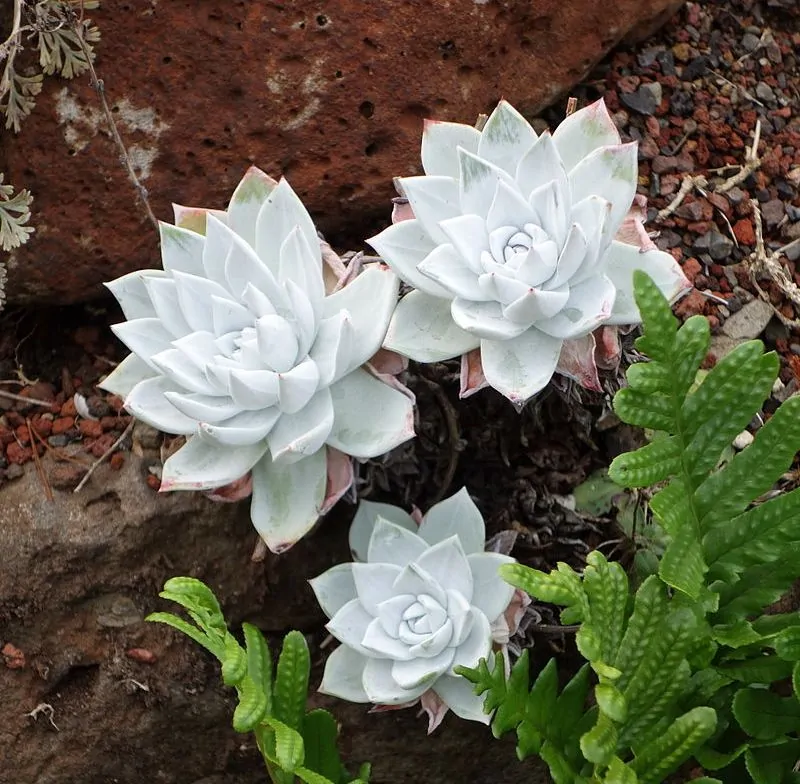
You’ll recognize the genus Dudleya from its rosette shape with spikey, farina-covered leaves. A greyish-green color is most common, although, with sun exposure, you’ll also see a lovely orange on the leaf tips.
Dudleya farinosa is most often seen for sale, although you might also find the giant chalk Dudleya (Dudleya brittonii) or Dudleya greenei with its typical more elongated leaf shapes.
The roughly 45 species of Dudleya are naturally found in North America, where they mostly inhabit the southwestern states. They’re also referred to as ‘live-forevers,’ a reference to the fact that these succulents do best when mostly left alone. As a houseplant, it is very hard to kill, requiring little to no maintenance. However, make sure you follow its care guide and do not neglect it altogether.
Little water is needed, and you’re actually often best off not watering at all during the summer months. Provide lots of sun, good air circulation, and a special succulent soil as always.
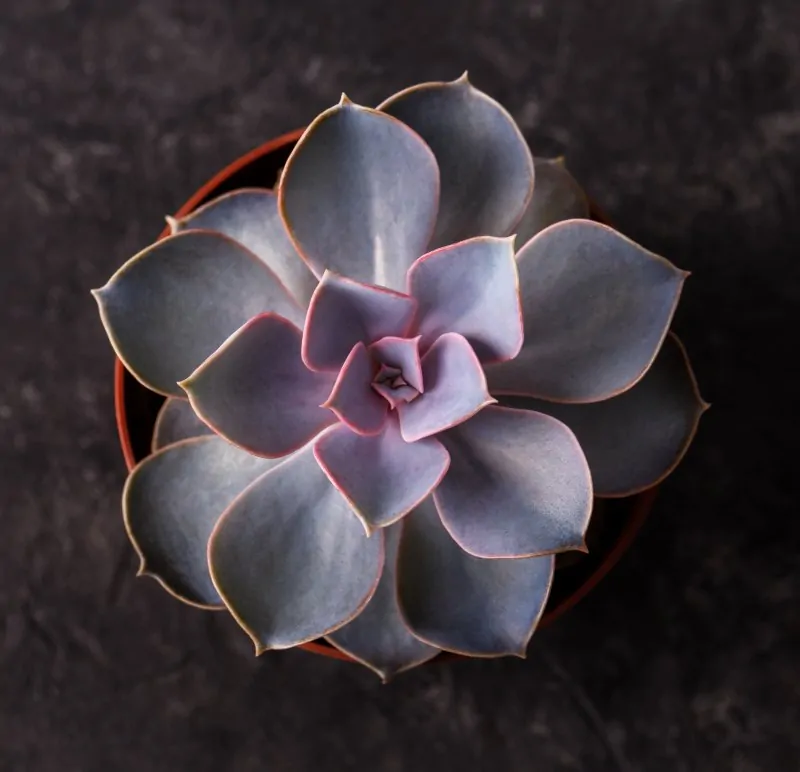
No list of types of succulents or types of succulents with pictures you might fall in love with would be complete without it. Echeveria is probably the most well-known and common of the rosette succulents. It is a real stunner with many subspecies and man-made cultivars. Especially when you place it on a succulent pot that matches its color. If you really want a mind-blowing experience, check out our guide on the different types of Echeveria and pick your next favorite succulent from that list!
You might recognize the large pastel purple Echeveria ‘Perle von Nürnberg’, the spectacular black or dark green Echeveria ‘Black Prince’, the hardy Echeveria agavoides with its pointy light green leaves, or one of the many funky leaved cultivars like ‘Topsy Turvy’, ‘Raindrops’ or the frilly ‘Blue Waves’ and ‘Neon Breakers’. Really, the variety in this genus is endless!
Native to Central America, Echeveria is found in dry, desert-like habitats. As such, they like plenty of sun (though the full summer rays can be a bit too much in some climates). Good drainage and careful watering are the keys to healthy Echeverias; avoid low temperatures.
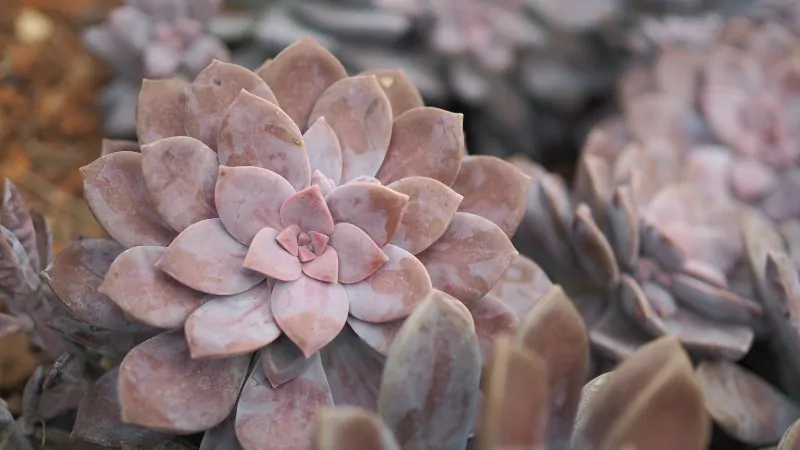
Another Mexican native, Graptopetalum is best known for the subspecies known as the ‘ghost plant’: Graptopetalum Paraguayense.
The genus ranges from a soft pastel grey-purple color to a brighter pink and eventually forms dense clusters. Older plants will often have long stems with rosettes hanging down, making for an excellent option for hanging planters. If you fancy an indoor garden with hanging plants due to small space requirements, add the Graptopetalum to the list of plants that make amazing indoor hanging decors.
As with the other types of succulents, the rules are simple. A well-draining soil type and bright sun are musts while overwatering is a quick recipe for problems. This succulent has adapted to stay dormant during both the cold winter months and the overly hot summertime, so you’ll see growth on it mostly during fall and spring.
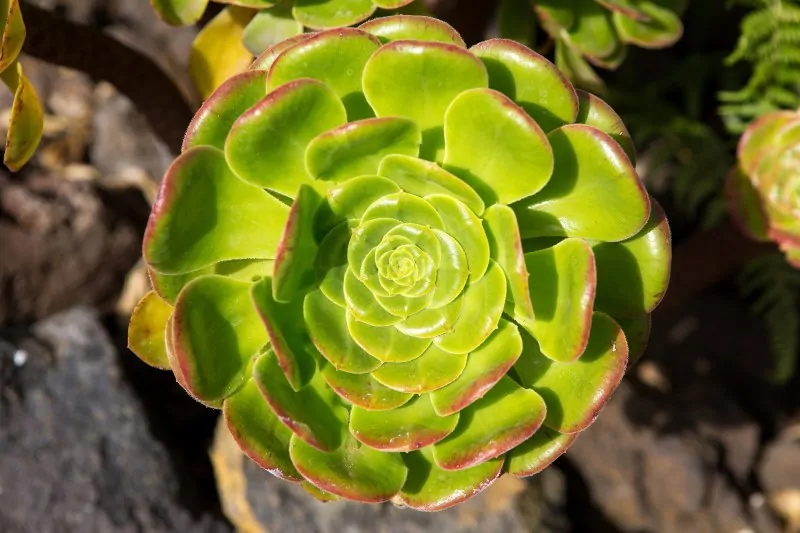
Now, this is an exotic genus! When it comes to astonishing types of succulents, this is one of those that take the cake! These succulent varieties, also known as tree houseleeks, are naturally found in the Canary Islands off the coast of North Africa.
The most common Aeonium is probably ‘Zwartkop’; its name is a reference to its dark purple and almost black foliage. You can also choose ‘Kiwi’ for a nice mix of green and neon pink, Aeonium Lindleyi for fuzzy leaves, or the strangely flat Aeonium Tabulaeforme if you’re into the weirdos.
As long as you don’t get freezes, your Aeoniums will be alright both outdoors and indoors. They’re rather hardy plants as long as they get proper drainage. As is to be expected from a plant that naturally grows in the Canaries, it likes plenty of sun and can withstand high temperatures without any issues.
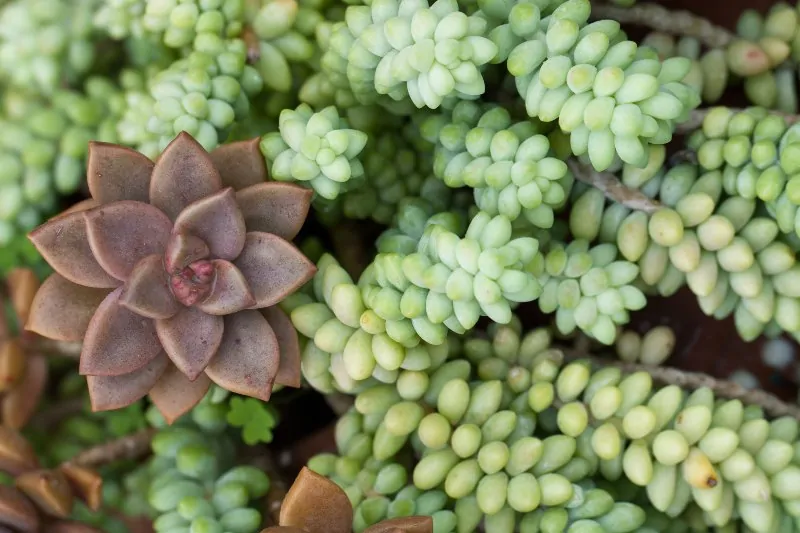
Another incredibly varied genus and a favorite for use as a foreground/trailing plant in outdoor succulent planters, Sedum is a genus that contains more different types of succulents and has more colors and shapes than one can count.
The most popular one is probably the hanging planter classic Sedum morganianum (burro’s tail) but also consider Sedum spectabile for its lovely flowers, rubrotinctum with its jellybean-like looks, rupestre for its carpeting properties or spurium with its many rosettes.
Most (though not all) members of the Sedum genus are very hardy and appreciated for their ability to withstand temperatures below freezing. Also, they don’t need a lot of water and can be planted in full sun; they can take it! Soil should be well-draining as always.
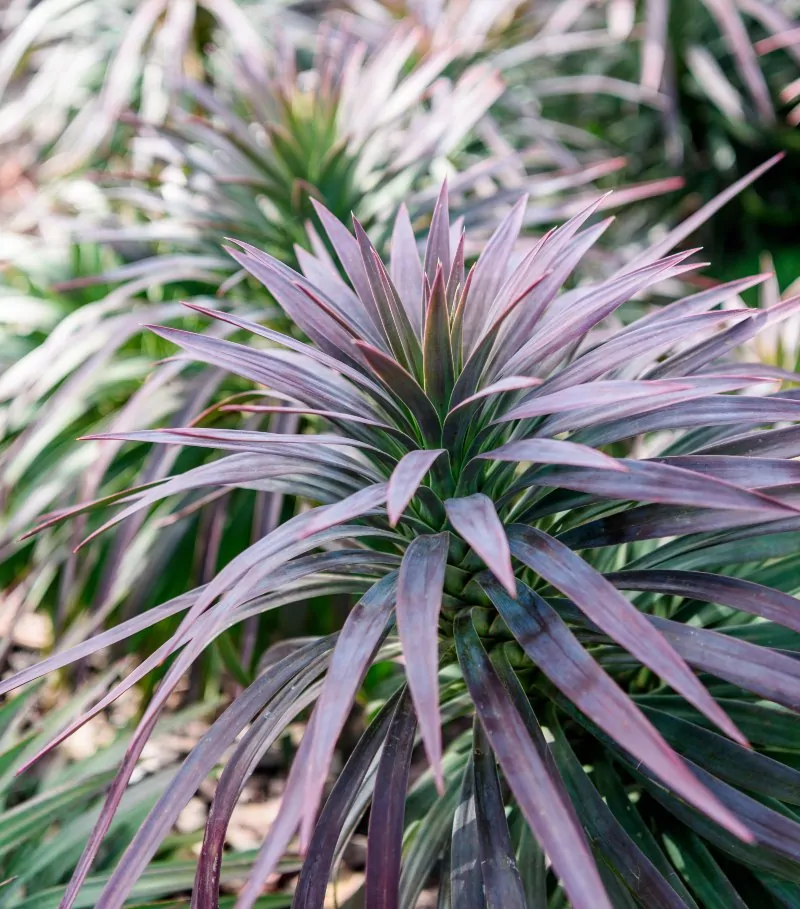
Another one for those who like to grow their succulents outdoors as well as indoors!
Yucca is a hardy genus that might remind you of Agave (discussed below), although its leaves are more blade-like and less fleshy.
The most popular Yucca to grow indoors is Yucca elephantipes with its soft and friendly leaves. The sharper varieties, like the appropriately named Spanish bayonet (Yucca aloifolia) and Spanish dagger (Yucca gloriosa), are best placed in the garden.
The best characteristic of Yucca is that many varieties can handle low temperatures without an issue (10 °F or even lower), making them suitable for growing in areas that get frost. Bright light is essential, especially if you want your plant to bloom, and remember that it goes dormant in summer.
For more information on how to grow Yucca, check out our Yucca plant care guide! Remember that Yucca is both an outdoor and an indoor tree that usually acts as a succulent, so if you want to host it in the living room, you should take note of the fact that it can become a quite large indoor plant that you can use to bring the entire room together.
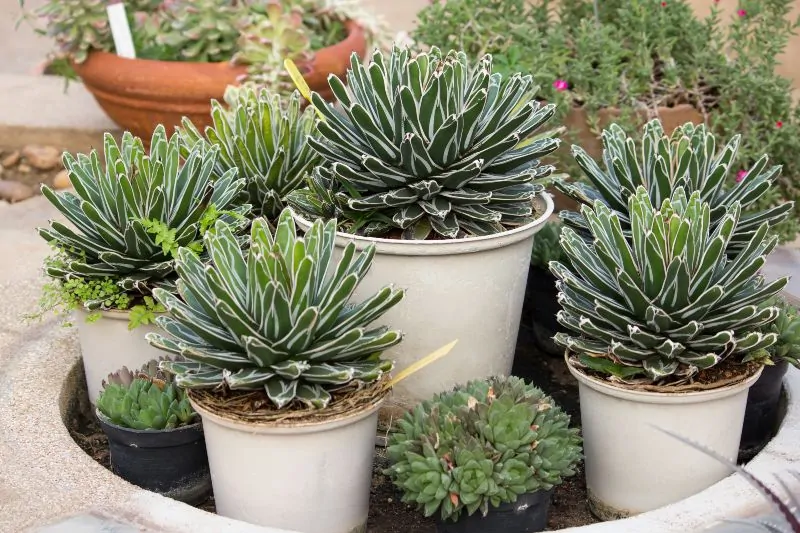
If there’s one genus that just screams Southwestern US, it’s probably Agave, as it’s one of the most common types of succulents to see growing there.
However, did you know there are also Agave succulent varieties that can handle chillier climates? Additionally, some types do wonderfully indoors. When it comes to the different types of succulents, it seems the sky is the limit!
Consider growing the popular (sometimes variegated) Agave americana, the elegant Foxtail Agave (Agave attenuata), the super spikey Agave parryi, or probably the most spectacular number of them all: Queen Victoria’s Agave (Agave victoriae-reginae).
All of those mentioned above can handle temperature lows of at least down to frost. Lots of sun is an absolute must, so you’ll have to take care to really find a good spot if you want to grow this one indoors without grow lights. Water as soon as the soil has dried out in summer but wait a bit longer during the winter months.
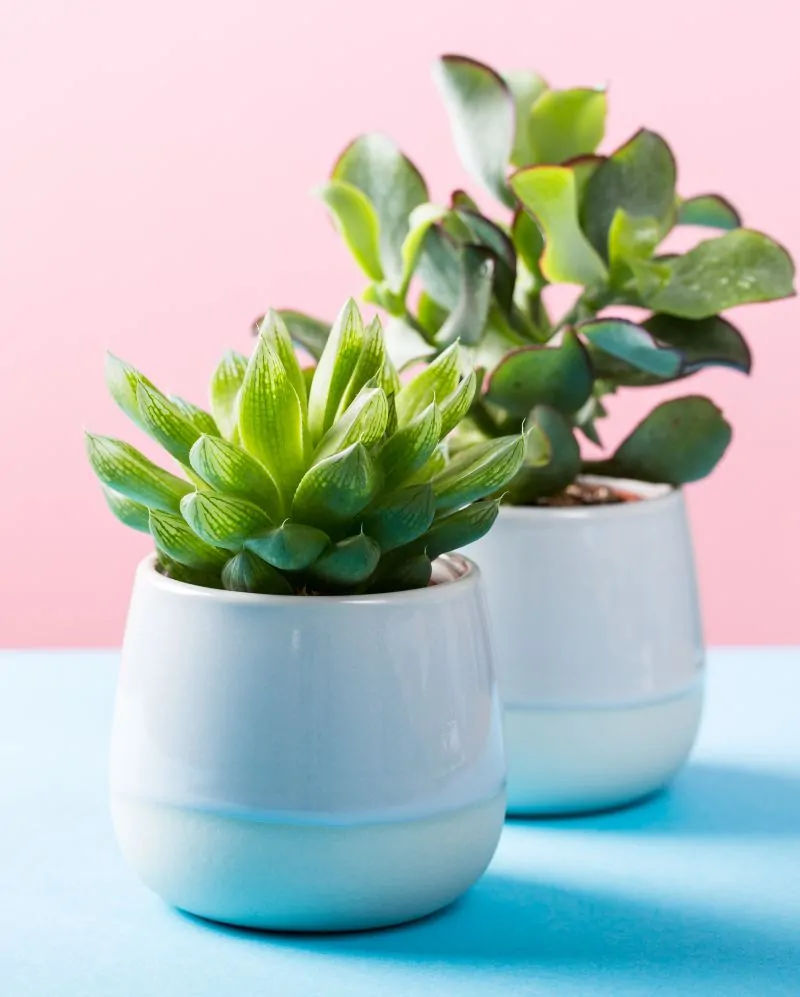
Next on our list of types of succulents that make anyone fall in love with this plant is Haworthia.
Definitely one of the funkiest genera on this list, Haworthia is particularly well-known for its window succulents. Haworthia cooperi, cymbiformis, and truncata feature alien-like translucent leaves that allow light to pass through them. Additionally, you might have heard of the popular Haworthia fasciata or zebra plant.
Haworthias are a little different from other succulents in that they don’t require as much light. Yes, they do appreciate a bright location, but they actually won’t respond too well to harsh direct sun, so be sure to avoid that. Other than that, their care is quite standard: light soil, let dry fully before watering again. Haworthia is dormant in winter, so reduce watering moments during the colder months.
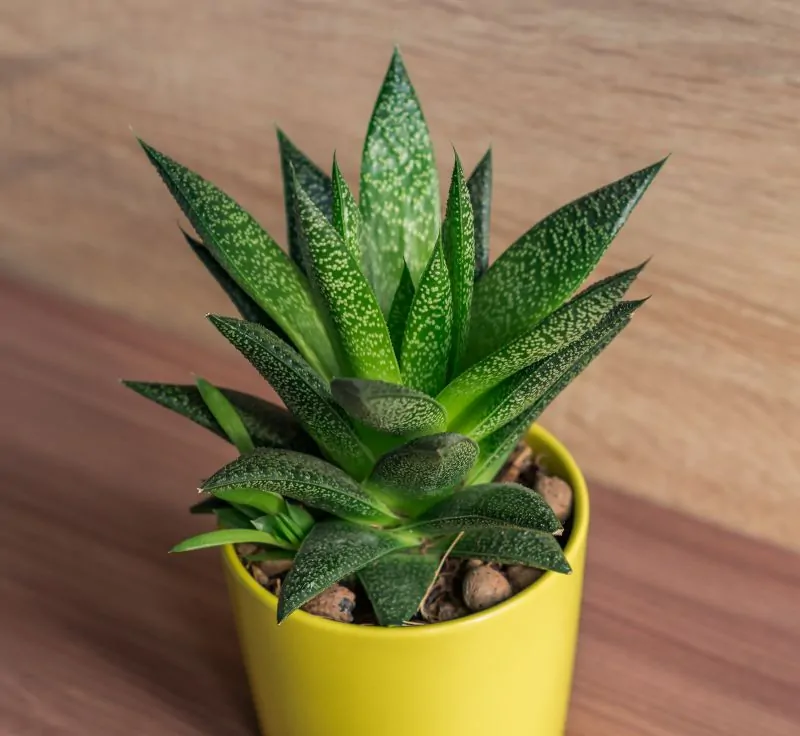
The member that the Aloe genus is known for is Aloe vera (or Aloe barbadensis), widely praised for its uses in skin care and medicinal properties. But, as seasoned gardeners know, when it comes to different types of succulents, Aloe does not fall far from the proverbial tree. If we managed to spark your interest, check out our guide on different types of Aloe for all succulent fanatics to fall in love with and take home!
As you can see, there’s plenty more Aloe to go around and some pretty spectacular species out there! We can’t even begin to list them all, especially since crossing has produced endless cultivars.
Still, some of our favorites are the torch Aloe (Aloe arborescens), lace Aloe (Aloe aristata – don’t confuse with Haworthia fasciata), and the small Aloe brevifolia.
Aloe care is quite similar to that of Haworthia in that they don’t need as much light as many other succulents. Although they still like some sun, harsh rays can cause brown damage to their leaves. Other than that, it’s your standard succulent care story: drainage, let the soil dry completely dry before watering again, and no frost, please.
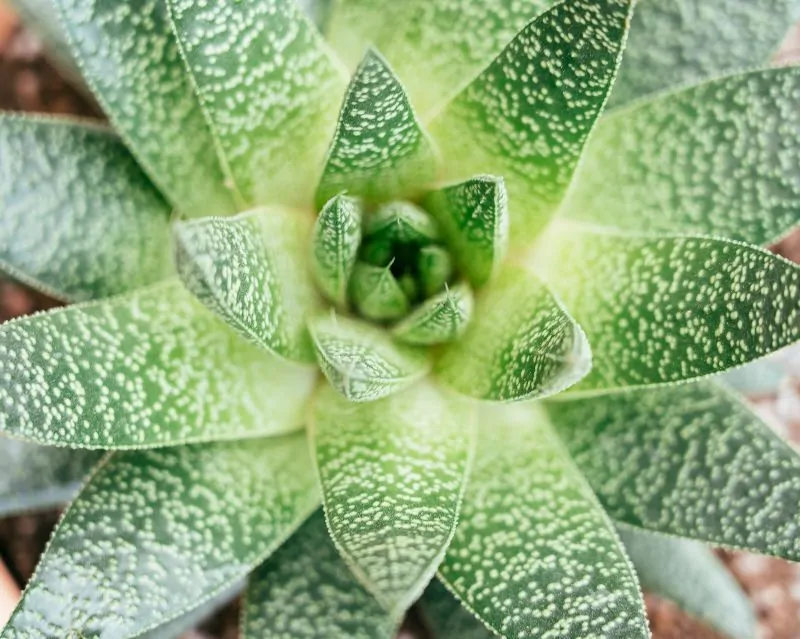
So it might be a little warty looking and maybe remind you of something you might find on an alien planet, but don’t write off the fascinating Gasteria based on its unfortunate appearance. Next on our list of different types of succulents with pictures is one that you cannot help but love.
Native to South Africa, this succulent genus related to Aloe is a great indoor choice that comes in many shapes and tends to stay small. You might have seen the popular (and appropriately named) Gasteria ‘Little Warty’ or the compact brevifolia. There are also human-made crosses with Aloe (like Gasteraloe ‘Flow’) and Haworthia (like Gasterhaworthia ‘Rosava’). Plenty to choose from is what we’re trying to say.
Gasteria care is similar to that of Aloe and Haworthia, and you can grow all three genera in the same spot. Lots of direct sun is not needed and can cause leaf burn. A happy member of this succulent species might thank you by sending out a lovely flower spike and producing pups at its base. For more information on succulent “reproduction,” make sure you check out our guide on the different methods you could employ to propagate succulents from leaf pullings, stem cuttings, offsets (pups), and seeds.
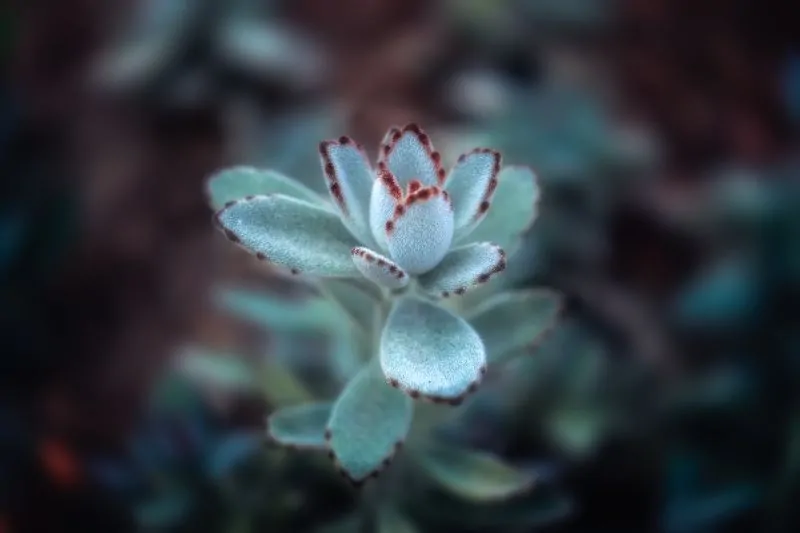
Kalanchoe is one of those genera that are so varied that there’s almost no way to capture them all. Take the adorable panda succulent, for example, and the popular paddle plant.
They couldn’t look more different, but actually, both of them are closely related (Kalanchoe tomentosa and Kalanchoe luciae, respectively)! And then there is the ever-loved Kalanchoe blossfeldiana with its spectacular flowers, the equally lovely blooming Kalanchoe marnieriana, and the huge felty Kalanchoe beharensis.
Kalanchoe care requirements can vary a bit between different Kalanchoe species (some are more ‘succulently’ than others). Still, in general, they like plenty of sun, good drainage, and room temperature or higher. And don’t forget: they can rebloom, so don’t toss yours once its flowers have gone.
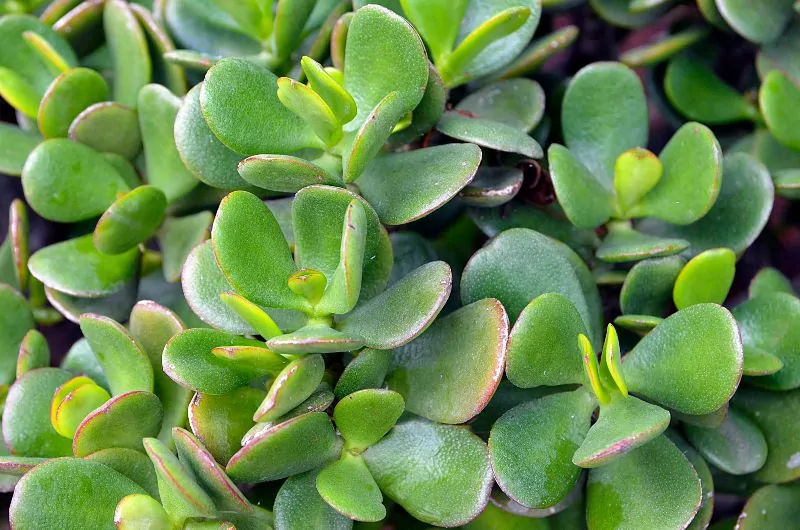
If there’s one succulent genus that even pretty much any non-houseplant enthusiast has seen at one point, it’s Crassula.
It’s one of the most common types of succulents, and its most prominent member is Crassula ovata (the Jade Plant or money tree), which can grow very old and attain the shape of a mini tree.
This species has also been selectively cultivated to produce cultivars with tubular leaves that are now very popular, such as Crassula ovata ‘Gollum’ and ‘Hobbit.’ Other than that, there’s the towering Crassula perforata, the hanging rupestris, the utterly bizarre geometric ‘Buddha’s Temple,’ and much more. There truly is a Crassula for everyone.
One of the reasons Crassula became such a staple in the houseplant hobby is its hardiness. This is a very hands-off genus that thrives on basic succulent care and, frankly, neglect. Most originate from South Africa. They’ll appreciate some time outdoors during summer but bring them back in when things get chilly. If you want to start hosting and loving Crasula Ovata as much as it deserves, we recommend you check out our full guide on how to care for the Jade Plant. You will not regret it!
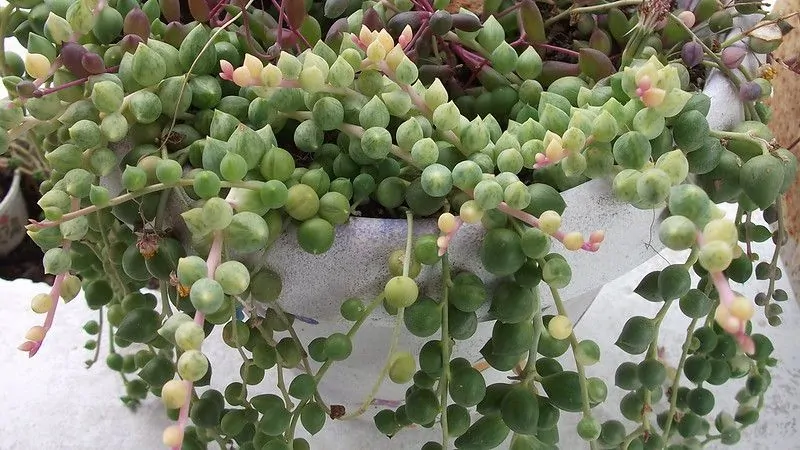
You might be familiar with the popular Senecio rowleyanus (String of pearls plant), but don’t think that’s where this genus ends. There’s more!
Take the wacky string of dolphins, for example (Senecio peregrinus, common name self-explanatory), or the popular blue Chalksticks plant (Senecio serpens). Then there’s Senecio herreianus for a pop of purple, the woolly Senecio haworthii, and the string of bananas (Senecio radicans) for another hanging option. Most Senecios are either pointy or consist of trailing strings of leaves.
One remarkable characteristic of Senecio is that most members of the genus are very drought tolerant. Allow them to dry out between waterings to prevent rot and be sure to use a well-draining soil type. Be sure to provide plenty of sun, especially if you have a stringy Senecio type, or its foliage will become very sparse, making for a rather sad-looking plant.
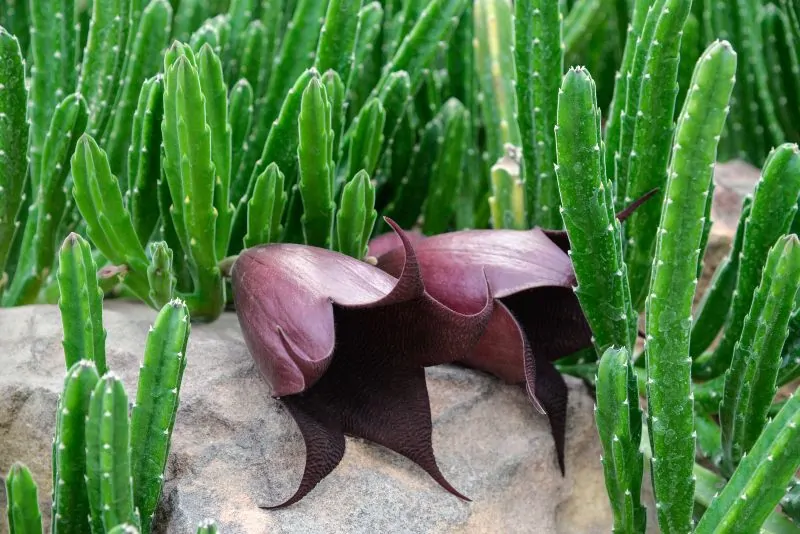
Although the name Stapeliad is used to refer to a multitude of species from different succulent genera, they’re often grouped because their care and looks are so similar.
In fact, ‘Stapeliad’ is their tribe name, making them Stapeliae. Know this whenever you need to understand or discuss different types of succulents with your friends or professionals in the landscaping industry. You might know them as stink flower succulents: they use flies as pollinators, and as such, their flowers smell like carrion. The most common Stapeliads are from the genus Huernia and Stapelia, though there are many more.
Stapeliads are not too difficult to grow and frankly, just fascinating. These segmented succulents are naturally found in various regions of Africa, and you’ll find them pretty hands-off (in fact, their most common killer is probably overwatering/loving them to death).
Their most spectacular feature, of course, is their star-shaped fuzzy flowers. Yes, they smell gross, but they’re still quite beautiful, and a happy Stapeliad will put out lots of them each growing season!
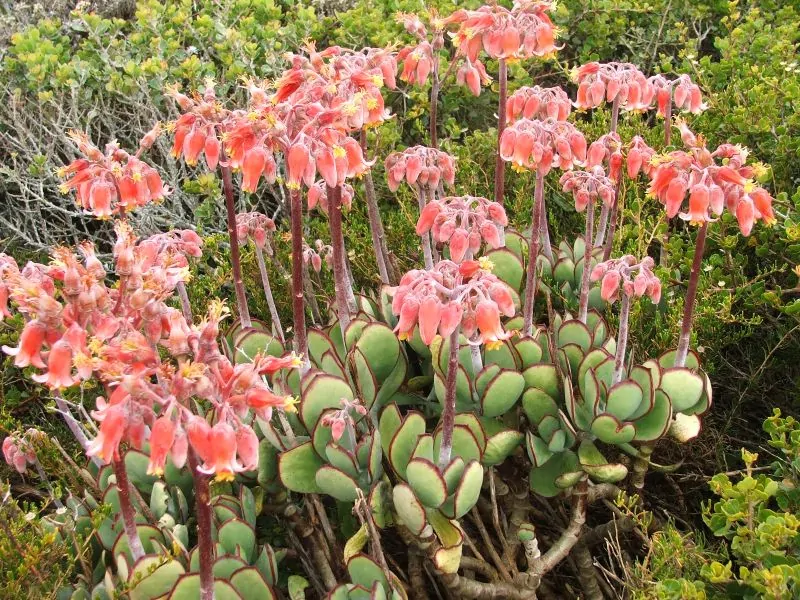
The funky African Cotyledon is a small genus of succulents containing a few species that are popular in the common houseplant trade, like the bear paw succulent (Cotyledon tomentosa) and the wacky, coral-like Cotyledon undulata. For outdoor growing, Cotyledon orbiculata (pig’s ears) appears to be the most common choice. It is one of the popular flowering succulents you can take care of.
The popular members of the genus are easy enough to care for just as long as you follow regular succulent growing guidelines carefully. Be sure to keep your Cotyledon frost-free and provide plenty of sun, especially during the summer months, when the plant is actively growing.
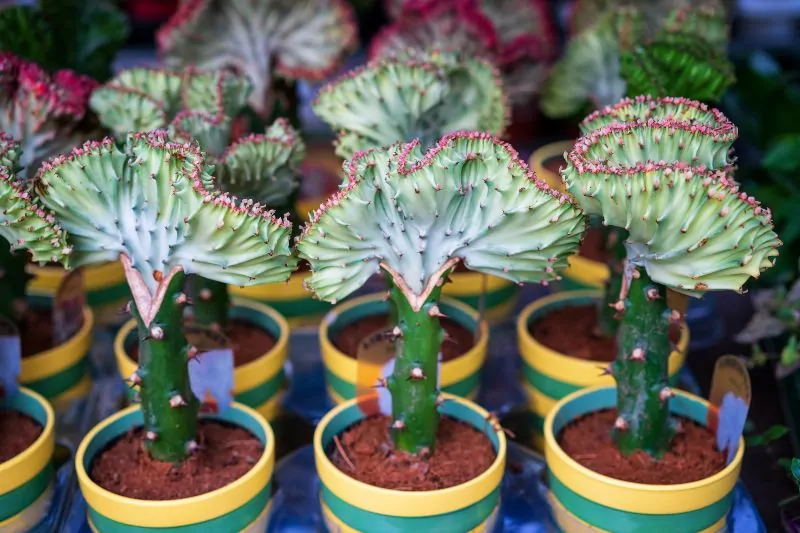
Another incredibly varied and large genus, when you need to discuss types of succulents, you need to know that not all Euphorbias are succulents. The ones that are, though, make an excellent choice for any houseplant enthusiast, and they’re very common succulents to find for sale.
No matter what shape, size, or color you like on your succulents, there’s an Euphorbia for you. Fat and round? Euphorbia obesa. Red color? Euphorbia trigona ‘Royal Red’ (African milk tree). Huge? Euphorbia ingens (candelabra tree). Very spikey? Euphorbia pentagona. And if you want things really, really weird? Coral cactus, which is a crested Euphorbia lactea (not a cactus!) grafted on top of a Euphorbia neriifolia base.
The most crucial factor to keep in mind when you’re interested in growing succulent Euphorbias is that it’s not one of those types of succulents that can go for months without water. It generally tends to like relatively regular waterings, although it should still be left to dry in between. Other than that, their care is typical for a succulent.
View this post on Instagram
Also known as mistletoe cacti, Rhipsalis are the odd one out on this list of different types of succulents with pictures. Not only are they mostly epiphytic (meaning they grow on other plants without harming them), but they are also tropical rather than from arid climates.
In fact, they are mainly found in rainforests! Also, their shape is different from most succulents as they consist of stems only. These stems can grow upright but hang down in most varieties, notably the popular Rhipsalis baccifera.
Because its natural habitat is so different from what we’re used to, Rhipsalis should not be treated to standard succulent care. It likes bright but indirect light, relatively high humidity, and constantly lightly moist soil during the summer growing months (dry during wintertime).
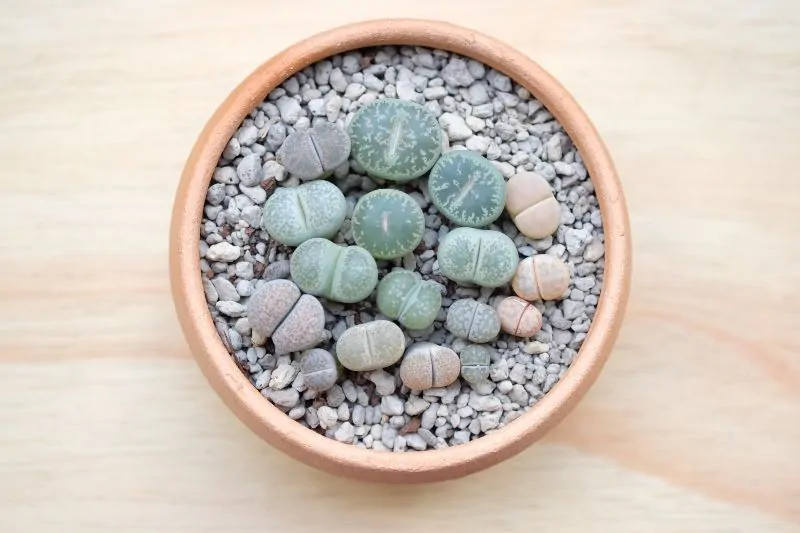
The genus Lithops is also collectively known as a living stone plant. And really, that’s a pretty apt description. They do look exactly like rounded little rocks that are easily overlooked when planted between real stones of similar sizes.
The species evolved to attain this shape to shield itself from the blistering heat of its natural habitat in South Africa and to hide from grazers that might like its watery insides.
It works like this: most of the plant is located underground where it’s a bit cooler. Little translucent patches in the top allow light to shine right into the inside but block the excess, making it possible for it to photosynthesize without being too exposed.
Now, Lithops species are desirable to grow indoors, and they stay small enough for even the most modest windowsill. Moreover, they make some of the best choices around if you want to build your own succulent wall as a vertical garden or living decoration in your living room or bedroom!
However, don’t let their cute appearance fool you. They are not the easiest to grow and need very specific conditions to complete their yearly cycle successfully.
For starters, they need super-draining soil and loads of sun. Then there’s the dormancy/watering issue: no water at all during the dormant summer months, then deep watering during early fall when the plant flowers. Then no water at all again during wintertime and some good drenchings during spring. Did you follow?
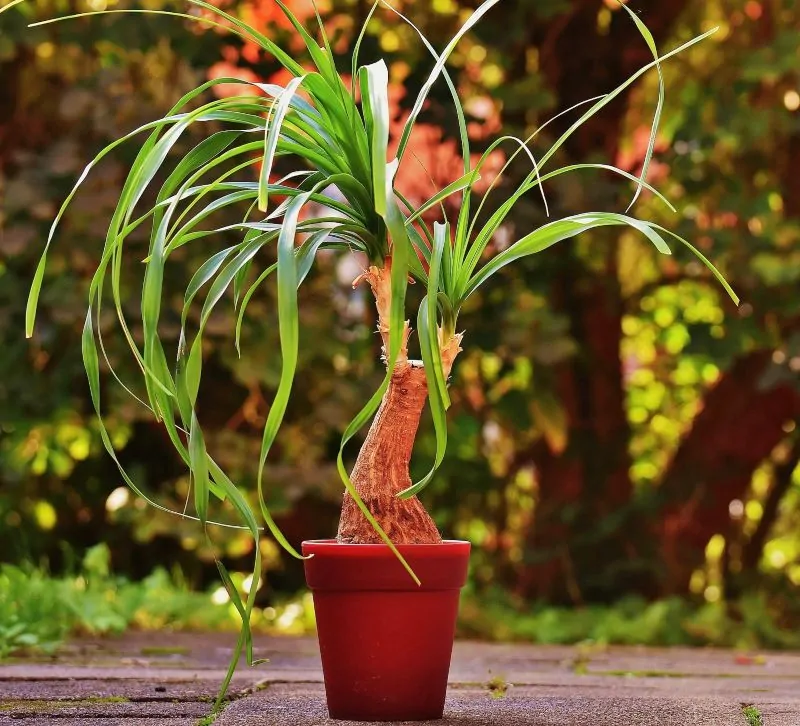
If the aforementioned Lithops are among the most complicated types of succulents to care for, Beaucarnea must be among the easiest.
Also known as ponytail palms, they may look like trees, but they’re actually succulents that store water in their thick trunks. All Beaucarneas look pretty similar, though recurvata is probably the most common one. There’s also guatemalensis (red ponytail palm), gracilis (spikier leaves), and a few more.
The ever-so slow-growing Beaucarnea will appreciate plenty of sun and well-draining soil. Let the soil completely dry out before watering again, but don’t wait too long, especially during the hot summer months. Low temperatures are no problem as long as frost is avoided. Nor are high temps, this is a Mexican/Central American native after all.
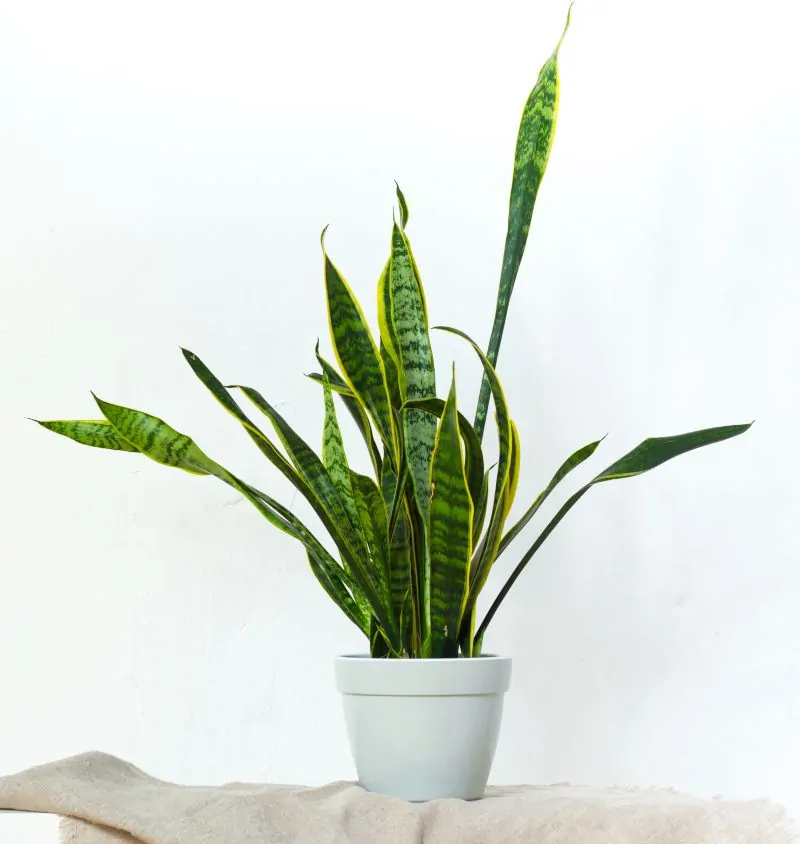
You might have been wondering when we’d finally mention this one, but it’s only appropriate to save some of the best for last!
Sansevieria is a genus of succulents that have been a part of the houseplant hobby for as long as anyone can remember. You might recognize the good old Sansevieria trifasciata from your grandmother’s collection, but don’t be mistaken: Sansevierias are hot again! Other classic types of snake plants include the pointy Sansevieria cylindrical and the highly sought-after whale fin Sansevieria (Sansevieria masoniana).
Care for Sansevieria is straightforward, and like many types of succulents, this species is more often loved to death than neglected to death. Keep in mind that Sansevieria spp. is a large indoor plant, able to grow up to 4 feet tall if you offer it the proper care!
Bright light is a good idea, but the direct afternoon sun might be a bit too scorching. Don’t water until the soil is bone dry and reduce watering in winter when the plant is dormant.
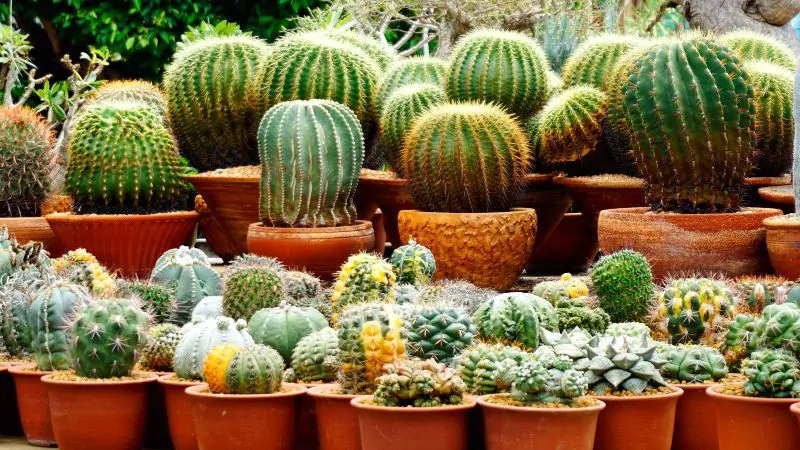
You probably know that cacti are all types of succulents as well (basically, all cacti are succulents, but not all succulents are cacti).
We’ve left the cacti out of this list, for now, to avoid turning it into a full-on encyclopedia, but know that there are many fascinating cactus genera out there.
Anyone interested in learning more about a few of them can start by looking up the following: Opuntia, Mammillaria, Echinopsis, (Echino)cereus, Holiday cacti, Echinocactus, Astrophytum.
If you want to learn more about growing and maintaining these amazing plants, don’t forget to check out our guide on succulents and cacti plant care indoors!
There’s a pretty good chance that the plant you’re dealing with is one of the common succulents listed above. If not, here are some things you can try to figure out when it comes to different types of succulents:
Succulent plant identification might seem like a daunting task, but in reality, this list of types of succulents with pictures already covers a great deal of them.
Additionally, there are some great tools out there that make identifying the different types of succulent plants a lot easier. Knowing what species you’ve got on your hands helps make sure you provide the best possible care and can keep the plant happy, so start identifying! Learning more about succulents in general also helps you build better succulent walls and create lovely indoor gardens and green interior designs!
With decorations that can be quickly rearranged and changed out whenever you’d like, you can easily display your love of succulents and other interests, as well as your mood for the day.
Now, it is your time to share your favorite types of succulents and the ones you already care for in your home or your garden!

Monthly updates on your favorite plants and how to keep them alive, delivered straight to your inbox!
Privacy Policy
This privacy policy outlines what info we gather from our visitors and contributors, the tools we use to collect, store, and protect it, and how we use this information.
Like any other website on the World Wide Web, YouHadMeAtGardening.com records some info about you and your device during your visit. This privacy policy outlines how our team gathers, stores, protects, and uses the information it gathers from visitors of the YouHadMeAtGardening.com website.
By continuing to use this website, you implicitly agree to this policy; if you do not agree to some or all of the procedures listed on this page, you can opt out at any time, however, you might not enjoy the intended browsing experience.
Our team reserves the right to alter this privacy policy with no prior notice to you. However, if the alterations made affect your personal data in any way, you will be notified immediately by email, on our homepage, or here.
Information YouHadMeAtGardening.com Collects
Our systems gather personally and non-personally identifiable information from visitors of the YouHadMeAtGardening.com website.
The only personally identifiable information we collect is your name and e-mail address only when leaving comments if you’re a visitor, or when submitting content and leaving comments, if you’re a contributor.
However, if you are not comfortable with providing your personally identifiable information to us, you can also use an alias instead of your real name and e-mail address without breaking any rules or regulations currently in use.
Note: If you submitted a comment using your personally-identifiable information and want it removed, you can always contact us and we will remove your info in 30 days.
The non-personally identifiable information we collect is your IP address, ISP information, device and browser info, and your browsing patterns – specifically the pages and websites you visit. This information cannot be used to track down your identity.
How We Collect Your Information
We use the following tools to gather personally and non-personally identifiable information from visitors and contributors:
• Cookies: these tiny text documents contain unique identifiers that are stored in your computer after your expressed consent. Cookies collect non-personally-identifiable information about your browsing patterns, which helps us pinpoint the areas of our website that require extra work and the areas that fully meet your needs.
• Log files: These tools record browser and device information, browsing patterns, websites that referred you to the YouHadMeAtGardening.com website, pages our website referred you to, and other types of non-personally identifiable information.
• Sign-up forms: these requests only come up when registering for our newsletter and is the only way our team collects personally-identifiable information from visitors.
How We Protect Your Information
All information we gather, both personally and non-personally identifiable, is stored in systems and databases managed only by the YouHadMeAtGardening.com team. We use the latest security measures to make sure the information you provide and the information we gather stays confidential, such as encryption, user behavior monitoring, and a series of managerial procedures.
How We Use Your Information
We only use your personally and non-personally identifiable information to improve the quality of the website and your browsing experience while here. We want to know which pages and sections of our website satisfy your needs and are of real value to you and which ones need improvement so we can make the proper adjustments. We also use your information to make sure the website is properly displayed on your device and browser.
If you choose to opt in for our newsletter, we will also use your information to keep in touch.
However, know that the YouHadMeAtGardening.com team will never share your information with other parties in exchange for financial rewards or any other kind of benefits. Some third parties might get very limited access to your info, but only to your non-personally identifiable information and only as we described above.
The personally identifiable information you provide is strictly confidential, therefore we will not share it with anyone.
Advertising
This Site is affiliated with CMI Marketing, Inc., d/b/a CafeMedia (“CafeMedia”) for the purposes of placing advertising on the Site, and CafeMedia will collect and use certain data for advertising purposes. To learn more about CafeMedia’s data usage, click here: www.cafemedia.com/publisher-advertising-privacy-policy
